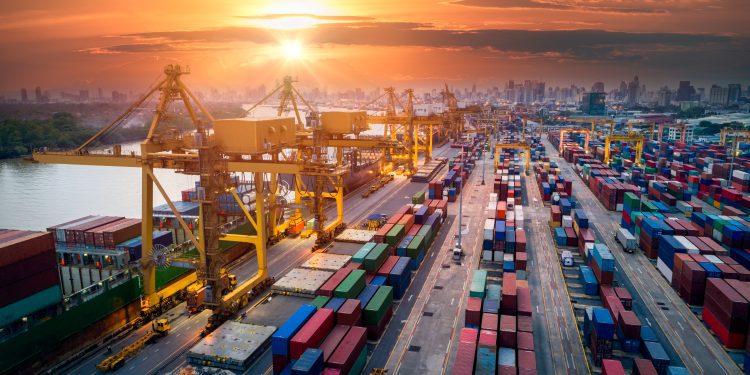According to Yang Ming Marine Transport Corp., a Taiwanese container shipping company based in Keelung, port bottlenecks that have increased supply-chain congestion because of the war in Ukraine and lockdowns in China may be showing signs of easing.
At the moment, the number of ships waiting outside of the ports in Los Angeles and Long Beach have been reduced to less than 40, from more than 100 earlier this year, according to Cheng Cheng-mount, chairman of Yang Ming. Currently, ships are waiting 2-3 days at the Shangai ports, compared to 10-14 days at the U.S. ports.
I think this is a good sign that the port congestion has been easing [in the U.S.]
…Cheng said in an interview Tuesday.
We foresee in the second half, everything will become smooth. All the difficulties will be easier
…Cheng continued.
Regarding the lockdowns in China, he sees the global impact as a “short-term phenomenon” that should be limited to second-quarter operations, Bloomberg reports. According to Cheng, China is expected to adjust to its COVID-19 policy, and the nation’s economy to rebound in the second half of 2022.
As informed, Russia’s invasion of Ukraine and China’s lockdowns threaten to escalate the disruptions that the supply chains are already facing. The industry is expecting the impact to ripple globally throughout the year.
While shipping operations are improving in Shanghai and factories are gradually restarting, containers are stillpiling upin ports because of a shortage of trucks. Once bunched-up cargo vessels start sailing again, logistics experts warn of a flood of containers clogging U.S. and European ports.
Bloomberg says that global trade growth is projected to slow to 5% this year from an estimated 10.1% in 2021, according to an International Monetary Fund report.
I agree that the trade is going to slow down, and this is due to the war in Ukraine, and also delayed demand from COVID-19
…Cheng said, adding that the global recovery is expected to “take a break” before resuming its growth momentum.
We are rather optimistic
…he added.
What is more, Cheng expects measures by the U.S. government to speed flows at ports — such as rules to immediately move empty containers — will gradually kick in and ease the congestion in the second half. According to Cheng, once the logjams improve, it will lead to lower freight rates.
In addition, Cheng sees globalization evolving as trading patterns shift. This means that supply chains will become more regional and shorter amid rising transportation costs. While the tensions between the U.S. and China are continuing, supply chains will be split into 2 systems that each operate “inside a bubble” and navigate away from sanctions.
Our capacity is fully booked
…Cheng said, adding that he biggest concern now is how to satisfy clients’ demands.
Recently, many industry stakeholders expressed their concerns over supply chain disruption. For example, Maersk, the world’s second-largest container shipping company, expected the Shanghai lockdown to have a great impact on trucking services and to increase transport costs.
A few days ago, Windward, a Predictive Maritime Intelligence company, reported that 1 in 5 container vessels globally was waiting outside a congested port – of which 27.7% in China.






